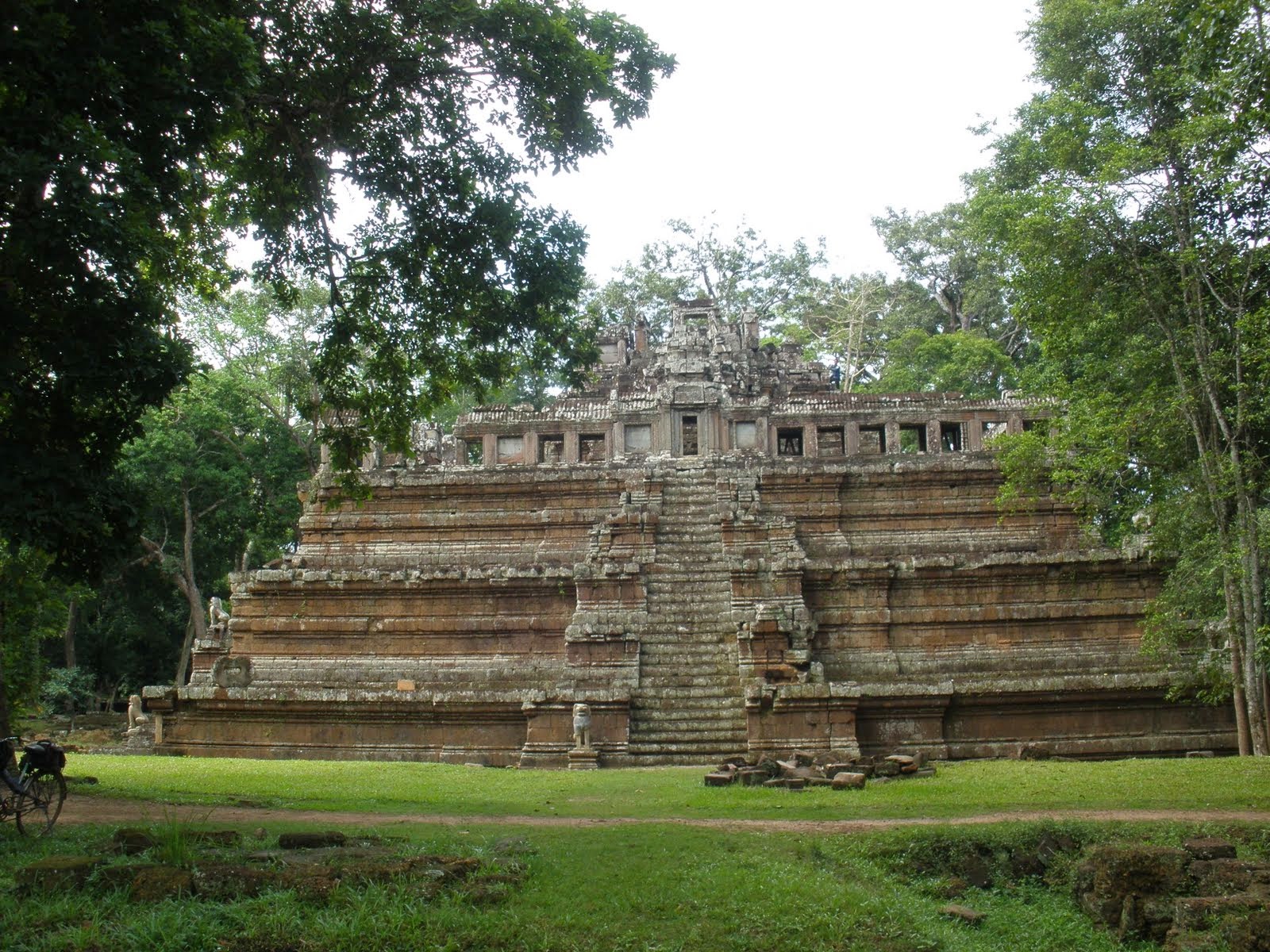The name 'Phimeanakas' is a derivation of the Sanskrit words 'vimana'
and 'akasha' which together mean 'celestial palace of the gods'. In
contrast to this illustrious name, the temple itself is a fairly modest
edifice measuring 36 x 28 meters at the base and 30 x 23 meters at the
top, rising only 12 meters above the surrounding landscape. It was
constructed during the reign of Rajendravarman II or Suryavarman I and
probably functioned as a private temple for the king and a select group
of invitees. Evidence for this is the location of the temple within the
royal palace compound, as well as the limited space on the upper terrace
which permitted only a single tower (rather than the usual five on
other temple-mountains). There was also no causeway leading to the
temple, and access to the top level could only be obtained by climbing
extremely steep staircases without landings.
The temple is made mostly of laterite though the upper gallery was the
first at Angkor to be built entirely of sandstone. When the Chinese
delegate Zhou Daguan visited Angkor in the 13th century, he referred to
Phimeanakas as a 'Tower of Gold', strongly suggesting that it was
gilded. He also relates a legend that the temple housed a nagini--a girl
with a serpent's body--which the King was required to bed each night
prior to sleeping with his wives and concubines. If he failed to keep
his appointment, the kingdom could expect to meet with misfortune. Worse
still, if the nagini failed to appear, it was a sign that the king's
death was imminent.


No comments:
Post a Comment